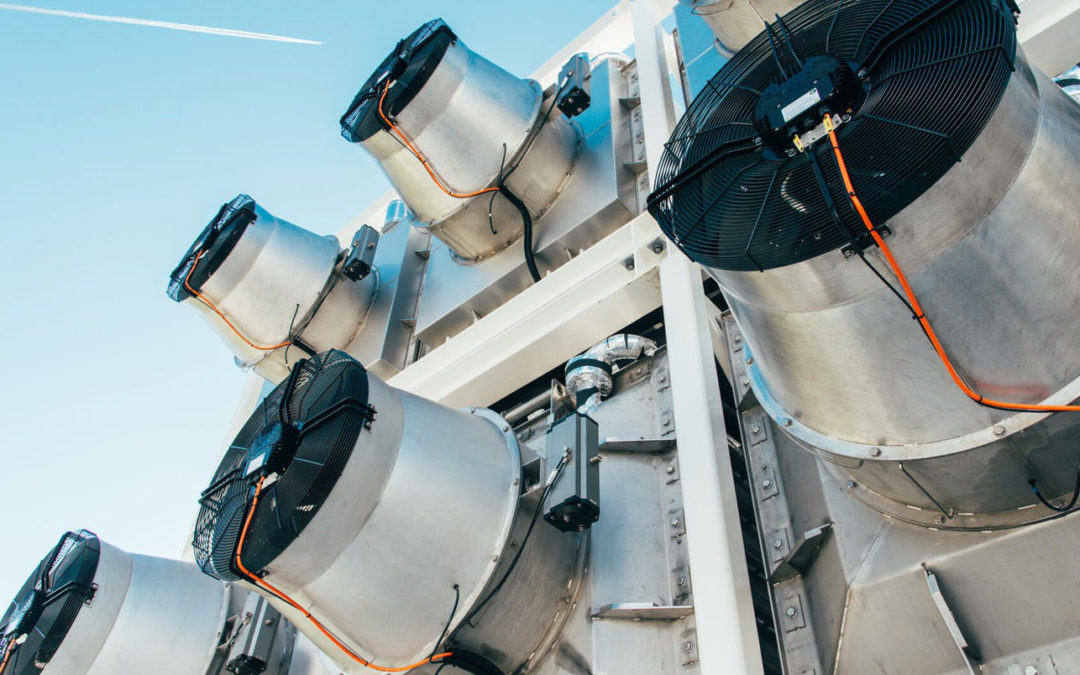SOURCE: CarbonBrief
DATE: July 22, 2019
SNIP: Machines that suck CO2 directly from the air could cut the cost of meeting global climate goals, a new study finds, but they would need as much as a quarter of global energy supplies in 2100.
The research, published today in Nature Communications, is the first to explore the use of direct air capture (DAC) in multiple computer models.
The two DAC technologies included in the study are based on different ways to adsorb CO2 from the air, which are being developed by a number of startup companies around the world.
One, typically used in larger industrial-scale facilities such as those being piloted by Canadian firm Carbon Engineering, uses a solution of hydroxide to capture CO2. This mixture must then be heated to high temperatures to release the CO2 so it can be stored and the hydroxide reused. The process uses existing technology and is currently thought to have the lower cost of the two alternatives.
The second technology uses amine adsorbents in small, modular reactors such as those being developed by Swiss firm Climeworks. Costs are currently higher, but the potential for savings is thought to be greater, the paper suggests. This is due to the modular design that could be made on an industrial production line, along with lower temperatures needed to release CO2 for storage, meaning waste heat could be used.
The energy needed to run direct air capture machines in 2100 is up to 300 exajoules each year, according to the paper. This is more than half of overall global demand today, from all sources, and despite rising demand this century, it would still be a quarter of expected demand in 2100.
To put it another way, it would be equivalent to the current annual energy demand of China, the US, the EU and Japan combined – or the global supply of energy from coal and gas in 2018.
There are also questions as to whether this new technology could be rolled out at the speed and scale envisaged, with expansion at up to 30% each year and deployment reaching 30GtCO2/yr towards the end of the century. This is a “huge pace and scale”, Gambhir says, with the rate of deployment being a “key sensitivity” in the study results.
Reaching 30GtCO2/yr of CO2 capture – a similar scale to current global emissions – would mean building some 30,000 large-scale DAC factories, the paper says. For comparison, there are fewer than 10,000 coal-fired power stations in the world today.
If DAC were to be carried out using small modular systems, then as many as 30m might be needed by 2100, the paper says.
The paper says that the challenges to scale-up and deployment on a huge scale bring significant risks, if DAC does not deliver as anticipated in the models. Committing to ramping up DAC rather than cutting emissions could mean locking the energy system into fossil fuels, the authors warn.
The global carbon cycle poses one final – and underappreciated – challenge to the large-scale use of negative emissions technologies such as DAC: ocean rebound. This is because the amount of CO2 in the world’s oceans and atmosphere is in a dynamic and constantly shifting equilibrium.
This equilibrium means that, at present, oceans absorb a significant proportion of human-caused CO2 emissions each year, reducing the amount staying in the atmosphere. If DAC is used to turn global emissions net-negative, as in today’s study, then that equilibrium will also go into reverse.
As a result, the paper says as much as a fifth of the CO2 removed using DAC or other negative emissions technologies could be offset by the oceans releasing CO2 back into the atmosphere, reducing their supposed efficacy.

